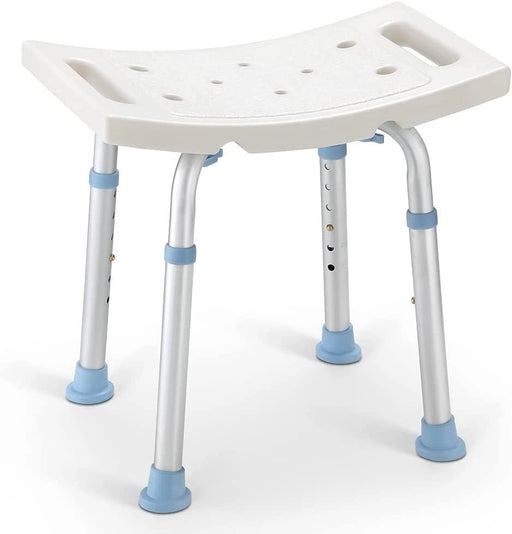6 Fall Prevention Tips for Seniors
The fall prevention tips may not seem to be exciting, but they are essential. As one ages, physical changes, health conditions, as well as medications prescribed to treat those conditions, all could contribute to an increased risk of falling.
In fact, are you aware that one in four older Americans suffers a fall each year? In elderly people aged 65 and older, falls lead to both fatal and nonfatal injuries. Broken bones, hip fractures, and head injuries can occur when people fall. Even falls without the risk of serious injury can paralyze an older person by making them fearful or depressed, which ultimately makes it difficult for them to remain active.
Fortunately, falls are preventable in most cases. What matters is to know where to begin with. Here are the relevant factors:
- Balance and gait: In our elderly years, most of us experience difficulty with coordination, flexibility, and balance, primarily due to inactivity, which makes slipping more often.
- Visual: Aging eyes receive less light, making it harder to recognize edges, tripping hazards, and obstacles.
- Medications: Certain prescription medications and over-the-counter drugs may cause dizziness, dehydration, or interact with each other and lead to falls.
- Environment: It could be a slippery floor, rickety stairs, or electrical cords--the causes of falls are most likely to occur in your home where you are not aware of dangers.
- Diseases: A significant percentage of older adults have one or more chronic conditions such as diabetes, strokes, or arthritis. In many cases, these factors contribute to the risk of falling because they cause impaired function, inactivity, depression, pain, or the use of several medications.
Seniors can avoid falling and sustaining injuries if these physical and environmental causes are reduced. In this article, we will illustrate several fall prevention tips for both seniors and their caregivers.
The fall prevention tips for elderly
1. Consult Your Doctor
Making an appointment with your physician is the first step in fall prevention. Bring a list of your prescription, over-the-counter, and herbal medications and supplements to the appointment. It is wise to have your doctor review your medications for side effects and interactions that may increase your risk of falling. For fall prevention, your doctor might recommend weaning you off medications that cause fatigue or impair your cognitive abilities, such as sedatives and some forms of antidepressants.
In addition to providing details about your health conditions, you should be prepared to discuss how comfortable you are when walking - for example, do you experience dizziness, joint pain, shortness of breath, or numbness in your feet or legs while walking? Your doctor may also examine your muscle strength, balance, and walking style as part of the evaluation. Then, specific fall-prevention strategies could be identified using these details.
2. Keep Your Bones Strong
One of the other fall prevention tips for elderly is to take care of your bones. Bones in good health will not prevent a fall, but if you fall, you might avoid breaking a hip or other bones, which may lead to hospitalization, nursing home stay, disability, or even death.
Diet plays a vital role in preserving bone health and vitamin D and calcium are important components of a healthy diet. Physical activity can help as well. Muscle strength can be maintained by regular exercise. Make your joints, ligaments, and tendons as healthy as possible by doing activities that focus on balance, flexibility, and strength training.
By maintaining your bone strength and health through regular exercise, you will be less likely to develop osteoporosis, a disease that weakens bones and increases their chance of breaking. Even a minor fall can be hazardous for people with osteoporosis. Mild weight-bearing activities such as walking or climbing stairs may slow bone loss associated with osteoporosis.
Quitting smoking and limiting alcohol consumption are other easy fall prevention tips for elderly, since both of these activities can lead to diminished bone mass and increased fracture risk. Also, keep your weight in check. Underweight individuals are more likely to suffer from bone loss.
3. Wear the Proper Footwear
If you're worried about falling, think about changing your shoes. You stand a greater risk of slipping, tripping, and falling in high heels, floppy slippers, and shoes with grippy soles. And the same can be said for walking in stockings. To resolve this issue, choose shoes with rubber soles and low heels if possible. Nonskid soled lace-up sneakers are also an option.
4. Use an Assistive Device
When walking, you may need assistance feeling steady. A cane or walker can prevent falls if they are used appropriately, so make sure it fits you well and the wheels roll smoothly. This is crucial especially when you're walking on uneven terrain or in an unfamiliar area. Physical and occupational therapists can help you figure out which devices may benefit you and demonstrate how to safely use them.
The fall prevention tips for caregivers
1. Get to Know Seniors' Health Status
If your aged loved one is having trouble managing their own health, you should learn about it. Are they having difficulty doing things that were easy for them previously? Let them express their concerns to you openly so you can assist them.
If your elderly loved one struggles to track their medication or is experiencing side effects, encourage them to speak to their doctor and pharmacist, who will be able to help them. Make sure seniors’ medications are reviewed every time a new prescription is filled. Keeping track of medications and schedules with a spreadsheet, or having a timer alarm that informs you or your loved one.
2. Examine Their Homes for Safety
Fall prevention is perhaps the most vital issue for seniors residing at home instead of in an assisted living facility. Make sure your elderly loved ones can move around comfortably in the home which can be made safer in many simple and inexpensive ways. A few examples are as follows:
- Lighting and Stairs: Install more lighting throughout, especially at the top of the stairs. Lighting should be accessible when seniors get up in the middle of the night. All beds rails and staircases rails should be placed well so that seniors can use these to get up and down the stairs.
- Bathroom: Surfaces with water (floors and counters) can be very dangerous for seniors who lack balance and agility to avoid falling. A senior who is unsteady may fall to the ground after stepping out of the shower. Make sure you provide non-skid mats in the shower and bathtub to avoid slipping. Ensure the tub and toilet have easy-to-reach grab bars, and you may even want to consider installing a toilet safety rail and a rolling shower chair.
- Furniture: Provide more space for seniors by removing unneeded furniture, which will also aid in creating a safer living environment.For example, it may be possible for seniors with more mobility to sidestep a footstool or coffee table, but not all seniors can. Additionally, deep plush armchairs may look comfortable, but seniors could be trapped if they lack the strength to get out of them. As you can see, an entire house remodel isn't necessary. Just several basic changes can help make the home fall-proof.
With the fall prevention tips we’ve shared above in this post, you can find wise ways to reduce the risk of falling and keep seniors healthy and independent for as long as possible.
Recommend Products
-
 Sale
Sale
Standard - 300LBS Capacity Shower Stool
Original price $51.99From Original price $29.99Original price $51.99Current price $29.99From $29.99Current price $29.99OasisSpace Medical Square Shower Stool for Bathtub OasisSpace Square Shower Stool for Bathtub is approved as the highest standard(FDA) for medical...
View full detailsSaleOriginal price $51.99From Original price $29.99Original price $51.99Current price $29.99From $29.99Current price $29.99


